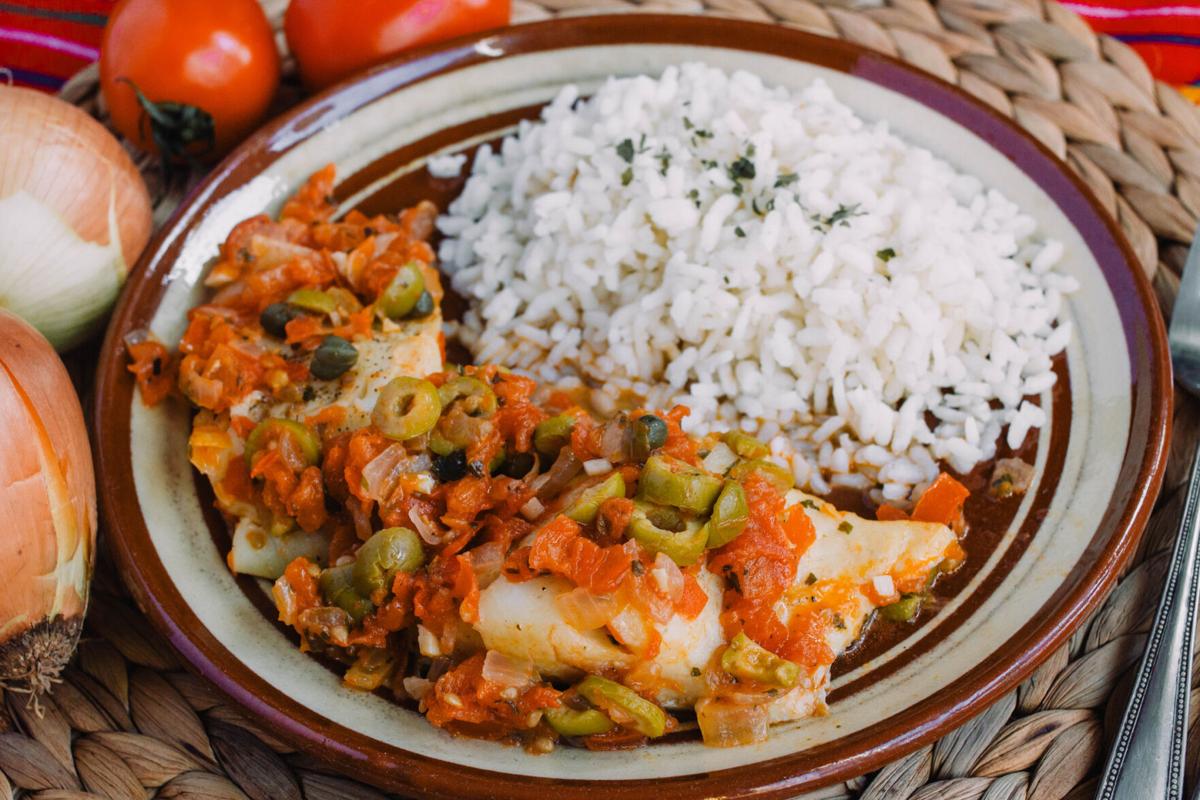My mother and I traveled together a lot over the years, but she went solo when she traveled to Veracruz.
She debriefed me on her return. The trip had been wonderful, she said, although she didn’t love the industrial nature of the city, which remains Mexico’s largest seaport, busy with oil production and tanker ships. She raved about the city’s anthropological museum, which exhibits Olmec, Totonac, and Huastec artifacts. She had a great passion for Mexico’s pre-Columbian history.
But the aspect of the visit she came back to again and again was the seafood. She loved the city’s most famous dish, Huachinango a la Veracruzano – red snapper cooked in the Veracruz style – so much that she ate it four of the six nights she spent in the city, she said.
Well, that made my mission pretty simple. In those days, I often cooked for her, and I needed to learn to recreate that dish to tempt her sometimes apathetic appetite.
We were both living in Michigan in those days, and I spent most weekends at her cottage. As she grew older, she needed more and more help with the tasks of daily living – grocery shopping, laundry, keeping up with housekeeping and so on. These things I was happy to do for her. I often dropped her off at the library while I picked up the week’s groceries, and that pleased her.
Still, there was a recurring problem.
“I’m so hungry for such-and-such,” she would say. Accordingly, I would pick up the ingredients for that dish and prepare it for dinner. But when I presented whatever that such-and-such might be for supper, she’d merely pick at it, leaving it mostly uneaten. “I guess I wasn’t as hungry for this as I thought,” she’d say apologetically.
It was certainly frustrating, although there wasn’t any point in letting that aggravation triumph. I was eating well, at least.
But when I mastered seafood in the Veracruzano style, I solved the problem. She’d eat heartily and ask for seconds. Yay! I’d found at least one solution to her diminished appetite.
Fresh red snapper was hard for me to find and expensive to boot. I found, though, that she’d eat the dish happily even when it was made with easier-to-find fish, including frozen cod and halibut, catfish and even salmon.
My mother has been dead these many years, and I miss her almost every day. But these days, when I make seafood a la Veracruzano, I remember how much it pleased her, and how it pleased me to see her eat so avidly something that reminded her of a trip she enjoyed so much.
Seafood a la Veracruzano
Makes 4 to 6 servings
Traditionally made with red snapper fillets, the Veracruzano sauce suits all kinds of fish and seafood (try it with shrimp!). Both the capers and the olives add a briny accent that complements the fish. My slightly simplified method gets its zing from the chiles in the tomatoes and from sliced pickled jalapeños. Serve with cooked rice.
Ingredients
2 tablespoons olive oil
2 softball-sized yellow onions, coarsely chopped
4 garlic cloves, minced
3 10-ounce cans diced tomatoes with chiles, mild or spicy, with their juice
1 cup pitted green olives, such as manzanilla or Castelvetrano, divided use
¼ cup capers, divided use
¼ cup sliced pickled jalapeños or banana peppers, divided use
1½ teaspoons oregano, preferably Mexican
3 bay leaves
1 teaspoon salt
6 6- to 7-ounce fillets firm fish, such as red snapper, halibut, cod, catfish, tilapia, or salmon
Chopped parsley, for garnish
Limes, quartered, for garnish
Cooked rice, for serving
Preparation
Heat the olive oil over medium heat in a sauté pan or skillet large enough to hold the fish in a single layer. When the oil is fragrant, add the onions and cook, stirring for 5 to 10 minutes or until the onion is translucent. Add the garlic and cook, stirring, for a minute or two longer. Be careful not to let the garlic burn.
Stir in the tomatoes, 1/2 cup of the olives, 2 tablespoons of capers, the pickled jalapeño slices, the oregano, and bay leaves. Cook, stirring occasionally, until the sauce reduces slightly, about 15 minutes. While the sauce is cooking, season the fish fillets with salt.
Preheat the oven to 350 degrees.
When the sauce has thickened, nestle the fish fillets into the sauce. Add a little water if the sauce seems too thick. Scatter remaining olives and capers over the fish.
Bake for 15 minutes or until the fish flakes easily with a fork. Place fish fillets atop or beside cooked rice, spooning some of the sauce over both fish and rice. Garnish with chopped parsley and pass lime quarters so diners can season to suit themselves.





